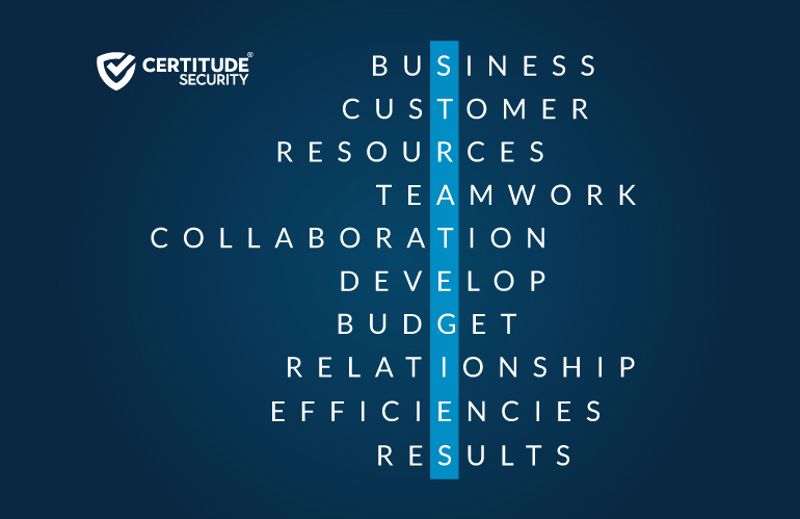Developing and leveraging resources to achieve results is core to business strategy. To do this successfully, you must understand your organization’s Strengths, Weaknesses, Opportunities, and Threats (SWOT). This article highlights internal and external priorities for business planning to find opportunities and eliminate threats.
Achieve Results
The primary objective of a SWOT analysis is to develop an awareness of critical factors involved in making business decisions. Many leadership teams regularly evaluate processes to ensure they operate as efficiently as possible. The quarterly and annual planning aids leadership in overcoming challenges and determining what initiatives to pursue.
How does your organization leverage resources to achieve results? Depending on your industry, strategies continuously evolve because circumstances frequently change while pursuing goals. A SWOT accomplishes this in four steps that departments, divisions, and organizations can understand and embrace.
Planning Before Action
The four elements of the acronym SWOT focus on allowing companies to identify the forces influencing a strategy, action, or initiative. Knowing these positive and negative elements can help management communicate the parts of a plan to prioritize.
Strategy discussions without action are lip service, just as activities misaligned with goals are often wasteful. Your collaborative sessions should inform a series of considerations around the core topic of the SWOT analysis, including;
- Goals are outcomes to be achieved that support and align with the purpose, values, and mission of the business
- Objectives define the measurable actions over months or quarters
- Strategy describes how the team will accomplish the goal
- Priorities are determined, and resources allocated
The best strategic use of resources is when internal variables (strengths and weaknesses) align with the external environment (opportunities and threats).
These steps should be clear and concise. The tricky part of strategy building is structuring meaningful actions for evaluation. A helpful method is framing questions with, “How do we __(action)_____, given __(limitation)____?

The Four Aspects of SWOT
Leverage internal strengths: Leadership’s strategic leverage comes from anticipating future events that provide time to transition in the right direction, pivot when adjustments are necessary, and concentrate their efforts and resources on fewer objectives to be more impactful.
- What do we do better than others in our field?
- What is our unique selling proposition?
- What resources do we have that are difficult to duplicate?
Identify internal weakness: Identified weaknesses are in the control of every board and leadership team. Leadership and managers must prioritize strengthening the most impactful of the weakest links within their organizations by refusing to accept the status quo.
- What factors cause us to lose sales and miss budget?
- What production processes lead to the most waste?
- What probable loss events have we not accounted for in our contingency planning?
Explore external opportunities: Don’t divide attention and resources into too many channels. Instead, focus on one to three critical issues and work on resolving those. A rapid market expansion could be enticing, but the rollout may incur delays or increased costs, depleting the capacity to service debt before revenue improves.
- What emerging trends can we leverage to improve efficiency and reduce expense?
- What opportunities do we see in new government policies?
- Should we pursue a new market niche?
Define external threats: It is essential to avoid misreading or misunderstanding market trends. Blind spots can be as dangerous as firmly-held assumptions.
- How do our competitors grow their market share?
- When will backlog impact our capacity and cause cash flow problems?
- What threats could harm us and immediately impact our operation and customers?
Six Informative Steps To Decisions
Rushing to buy and deploy hardware and software is an action that is often misleading. The sense of urgency to cut expenses or grow revenue that compelled the purchase quickly becomes regret as the outcome does not resemble the stated benefits. Decisions made in isolation lack perspective and may contain too much bias.
Cloud-based ERP, HR management, and security products are a few items that can squander significant resources. These mistakes bring competence into question, as a redo is sometimes required.
- Identify the goal. This achievable goal aligns, the forward-looking problem is understood, business stakeholders are involved, and agree to the value.
- Define S.M.A.R.T. actions. The objectives are the measurable actions to achieve the defined goal. SMART acronym means Specific, Measurable, Attainable, Realistic, and Time-bound. This definition of objectives allows others to understand the expectations and resources required.
- Gather relevant information. This step includes identifying your strengths, weaknesses, opportunities, courses of action, alternatives, and timeline.
- Evaluate your options. At this point, decision-makers weigh the benefits and value of one initiative or approach over another. You compare the costs and benefits of producing a result internally to the costs and benefits of hiring an outside supplier for the resources.
- Make your choice. The comparison of knowledge, capabilities, quality, capacity, labor, volume, timing, and cost are evaluated, and the make or buy decision is made.
- Evaluate your decision. The evaluation includes both short-term and long-term assessments. Because objectives are more specific than goals, they’re more straightforward to measure. To measure objectives, you can use one of the following concepts.
Decisions With Purpose
Decisions occur daily at every business level, from knee-jerk reactions by hourly employees to far-reaching executive decisions that require years of deliberation. Teams can perform SWOT exercises as a flexible analysis tool for many business situations relating to finance, IT, marketing, sales, and operations.
In a similar manner in which forecasts can be inaccurate, so is your understanding of loss exposure. Mark Twain is quoted, “It ain’t what you don’t know that gets you into trouble. It’s what you know for sure that just ain’t so.” Both scenarios play out in businesses daily, leading to waste and regrets.
Say No To The Status Quo
- What are the most significant concerns to the board and executives?
- What is most likely to pose significant threats and opportunities to the organization?
- What effort is needed to identify potential threats that could stand in the way of executing our strategy?
- Would more opportunities become available by eliminating specific weaknesses?
It is no secret that misalignment between the business and IT continues. Disagreements about IT’s role and investment priorities fuel mutual frustrations and cause business disruption events. When facing the challenge, what is the most appropriate decision?
Eliminate the internal weakness by assigning company resources to fix the problems or pursue an opportunity to increase shared knowledge and understanding through strategy planning.
Businesses incur costs by taking defensive measures to safeguard their data and systems. Cybersecurity measures constitute ordinary and necessary expenses and are deductible in the incurred year.
What happens when internal weaknesses are discovered and exploited by external parties? Paying the ransom is also deductible as a business expense for those who choose inaction.
Improving your cybersecurity is understanding your assets, the impact of downtime, exposure to attack, and where you can make the most significant improvements with limited resources. The cybersecurity SWOT highlights areas where your business is weak and helps you create goals and objectives to protect the business’s information assets that are needed to support your customers.
How will you benefit from decision-making SWOT exercises?

Value For Money Invested
Cybersecurity SWOT seems simple, but it can be very revealing when guided collaboratively. This process is not a finger-pointing contest or blame game. This is a diverse group of people across the business concerned about business performance during business disruption events.
The cybersecurity SWOT is an interview-based lightweight assessment that evaluates how cybersecurity and service continuity practices will impede your business from accomplishing the stated vision. As the collective team pairs external threats with internal weaknesses, you highlight your company’s most severe issues.
The first step to reducing the impact and duration of loss events is to assess your organization’s position before deciding on a new strategy. A review of capabilities most important to ensuring the continuity of critical services during operational stress and crisis is in order. Get your team moving in the right direction, getting the work done, and showing results.
Let’s collaborate! Click this link to schedule a time to talk about your needs. Honest feedback awaits to get it right, get it done, and build up the team. A goal without a plan is a passing wish. Get a jump start on your SWOT Analysis to tackle your trickiest decisions with purpose.
Shared understanding is a force multiplier that allows for effectiveness through higher-value conversations, knowledge transfer, and actionable insights. Improved decision-making awaits as you focus on budget preparations. We look forward to collaborating with you.
As a proud supporter of American companies, Certitude Security® is working diligently to inform leaders and facilitate essential asset protection priorities for manufacturers and supply chains throughout the United States.
Problem discussions can be a defining moment in your career. If you are interested in value creation, learn about SPOT-Beam™ by Certitude Security®. We look forward to helping you and your business succeed!

